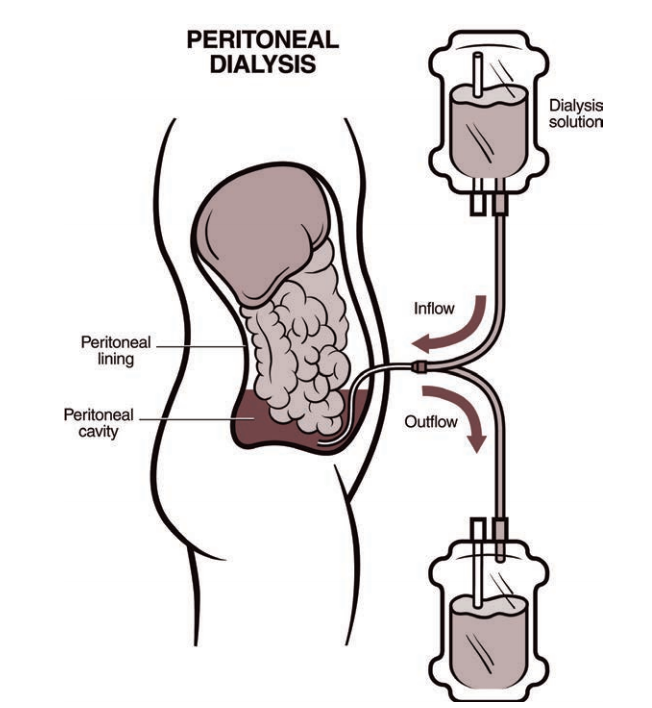Text 1:
The nurse is providing lifestyle change education for a client to slow the progression of coronary artery disease. Which statement(s) made by the client should the nurse recognize as needing additional education? (Select all that apply.)
Consume foods with saturated fats.
Walk 30 minutes per day.
Use a salt substitute.
Keep a food diary.
Eat more canned vegetables.
Include oatmeal for breakfast.
Correct Answer : A,E
Choice A reason: Consuming foods with saturated fats can increase the level of low-density lipoprotein (LDL) cholesterol in the blood, which can contribute to plaque formation and narrowing of the coronary arteries.
Choice B reason: Walking 30 minutes per day can help lower blood pressure, improve blood circulation, and reduce the risk of heart attack and stroke.
Choice C reason: Using a salt substitute can help lower sodium intake, which can reduce fluid retention and lower blood pressure.
Choice D reason: Keeping a food diary can help the client monitor their calorie intake, portion size, and nutritional balance.
Choice E reason: Eating more canned vegetables can increase sodium intake, which can worsen fluid retention and blood pressure. Fresh or frozen vegetables are preferable.
Choice F reason: Including oatmeal for breakfast can provide soluble fiber, which can lower LDL cholesterol and prevent plaque formation in the coronary arteries.
Nursing Test Bank
Naxlex Comprehensive Predictor Exams
Related Questions
Correct Answer is B
Explanation
Choice A reason: Support stockings may help with peripheral edema, but they are not the priority intervention for this client. The client's low serum albumin level indicates malnutrition and increased risk of infection and poor wound healing.
Choice C reason: Evaluating patency of the AV graft is not the priority intervention for this client because the client is receiving peritoneal dialysis, not hemodialysis. The AV graft may be used in the future if peritoneal dialysis fails, but it is not an immediate concern.
Choice D reason: Instructing the client to follow fluid restriction amounts is important for peritoneal dialysis patients, but it is not the priority intervention for this client. The client's low serum albumin level indicates that fluid restriction alone is not sufficient to manage fluid balance and prevent edema.

Correct Answer is D
Explanation
The correct answer is: c. Leave the light on in the room at night.
Choice A: Replace the IV catheter with a smaller gauge
Replacing the IV catheter with a smaller gauge is not directly addressing the issue of the client’s confusion and agitation. While a smaller gauge might be less irritating, it does not solve the problem of the client picking at the IV site. The pinkness at the IV site suggests mild irritation or early signs of phlebitis, which can be managed by monitoring and ensuring proper securement and care of the IV site.
Choice B: Apply soft bilateral wrist restraints
Applying wrist restraints should be a last resort due to the potential for causing distress, agitation, and physical harm to the patient. Restraints can lead to negative outcomes such as decreased circulation, pressure ulcers, and increased agitation, especially in patients with dementia. It is generally recommended to use less restrictive measures first.
Choice C: Leave the light on in the room at night
Leaving the light on in the room at night (C) can help reduce confusion and agitation in dementia patients, a phenomenon known as sundowning. However, it does not address the immediate issue of the non-occlusive dressing and the pink IV insertion site.
Choice D: Redress the abdominal incision
Given the situation, the most appropriate intervention would be to redress the abdominal incision (D). This is because the dressing is no longer occlusive, which can increase the risk of infection. Ensuring the dressing is secure and clean is crucial for the patient's safety.
Whether you are a student looking to ace your exams or a practicing nurse seeking to enhance your expertise , our nursing education contents will empower you with the confidence and competence to make a difference in the lives of patients and become a respected leader in the healthcare field.
Visit Naxlex, invest in your future and unlock endless possibilities with our unparalleled nursing education contents today
Report Wrong Answer on the Current Question
Do you disagree with the answer? If yes, what is your expected answer? Explain.
Kindly be descriptive with the issue you are facing.
